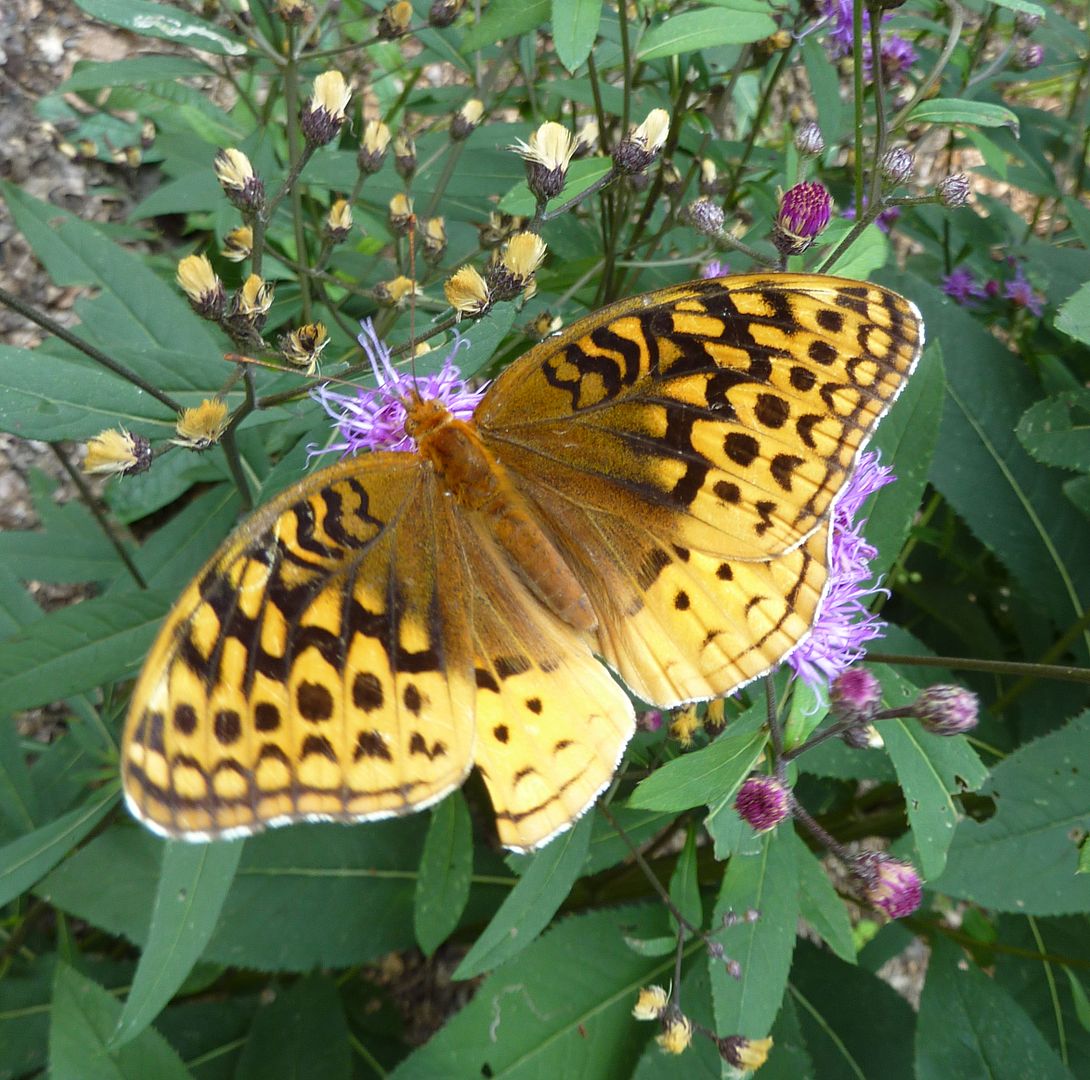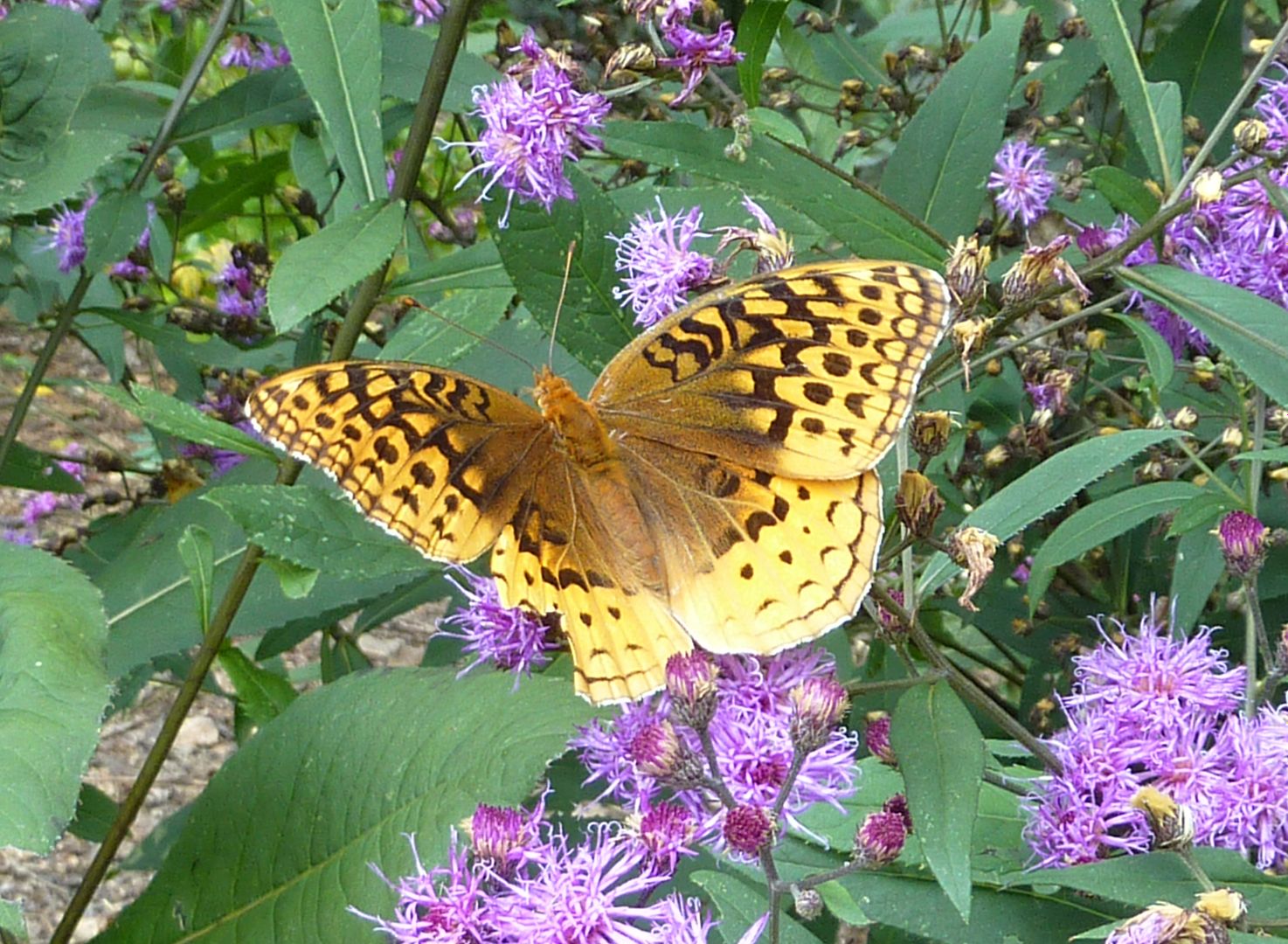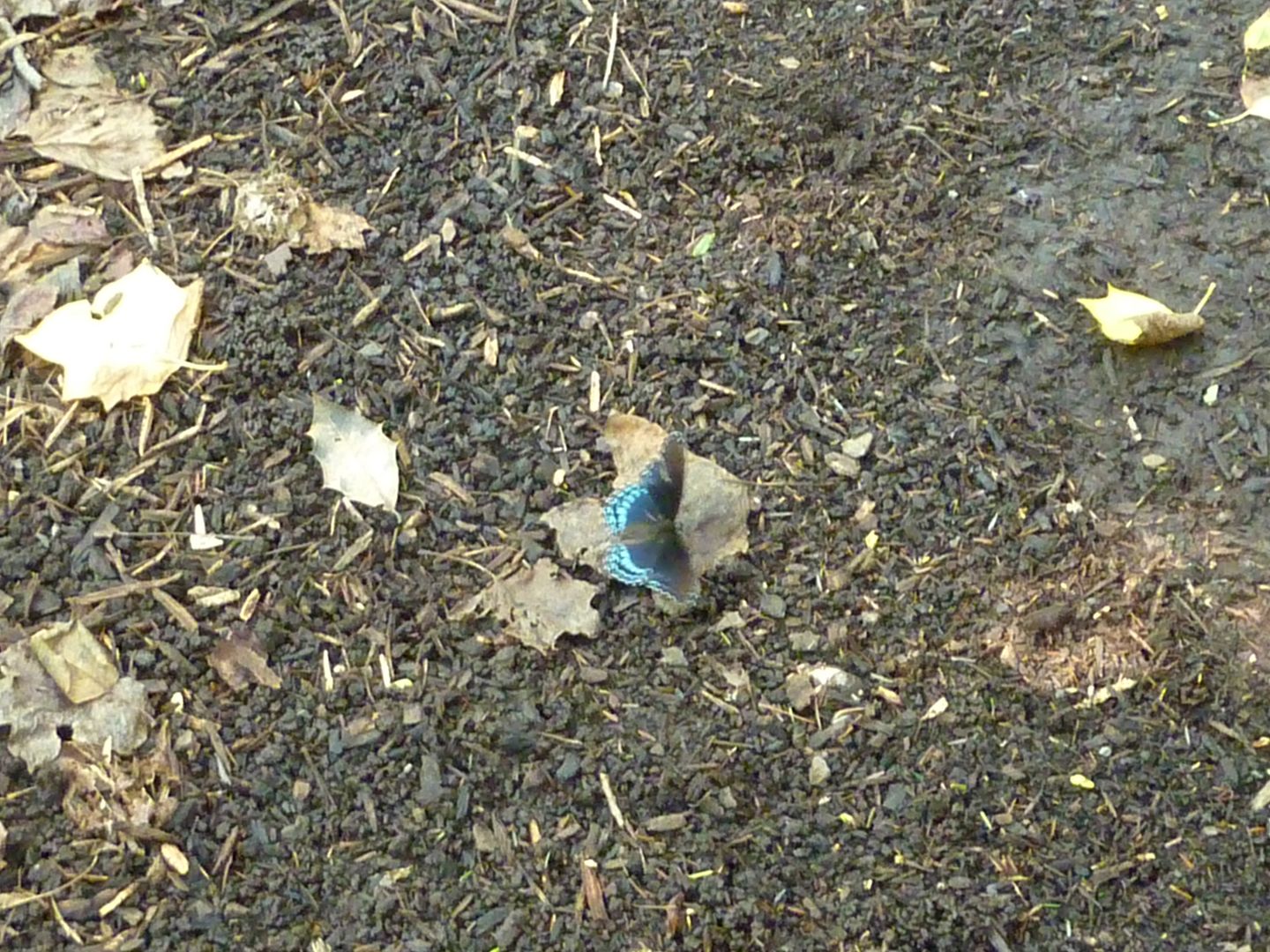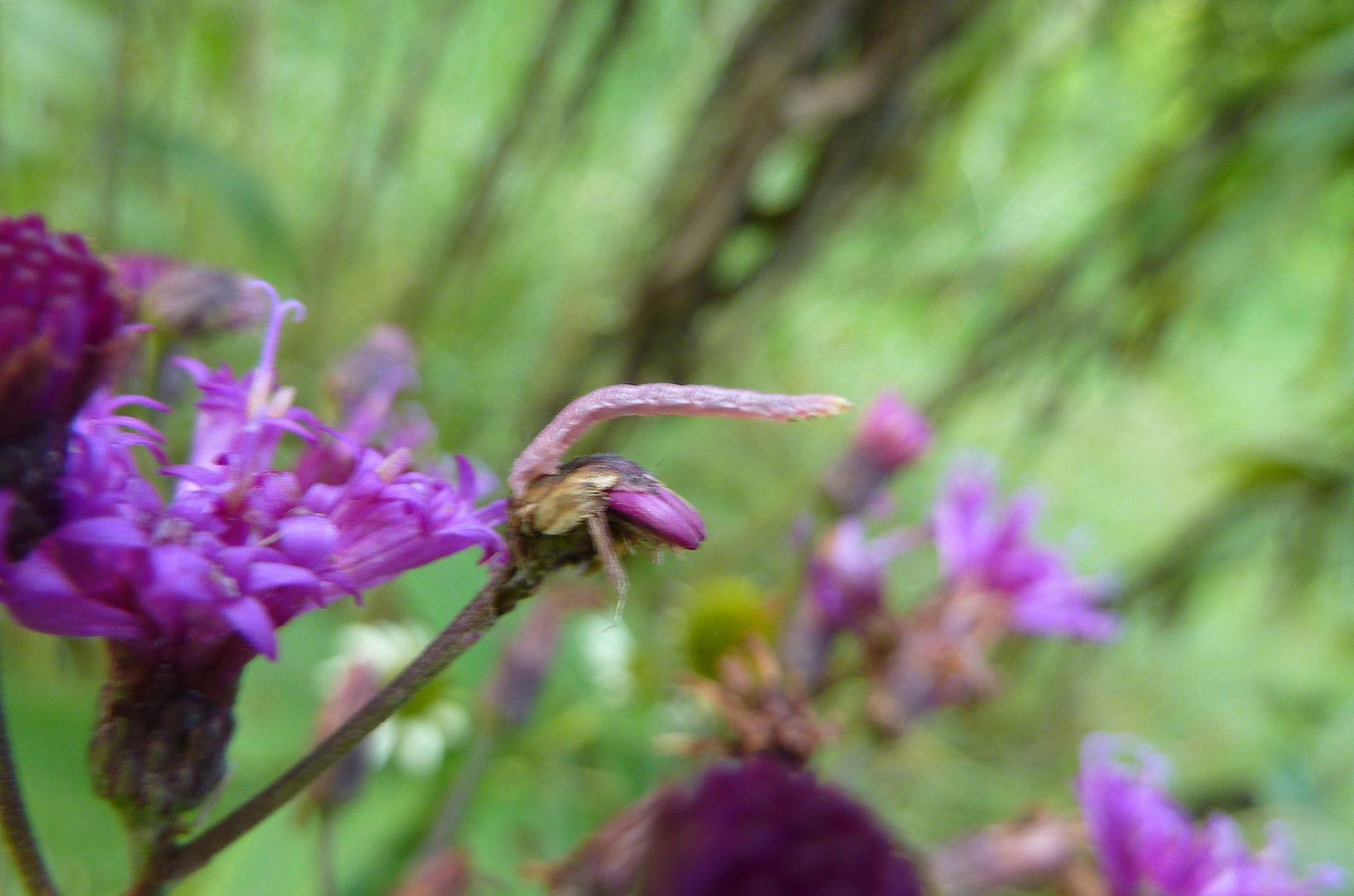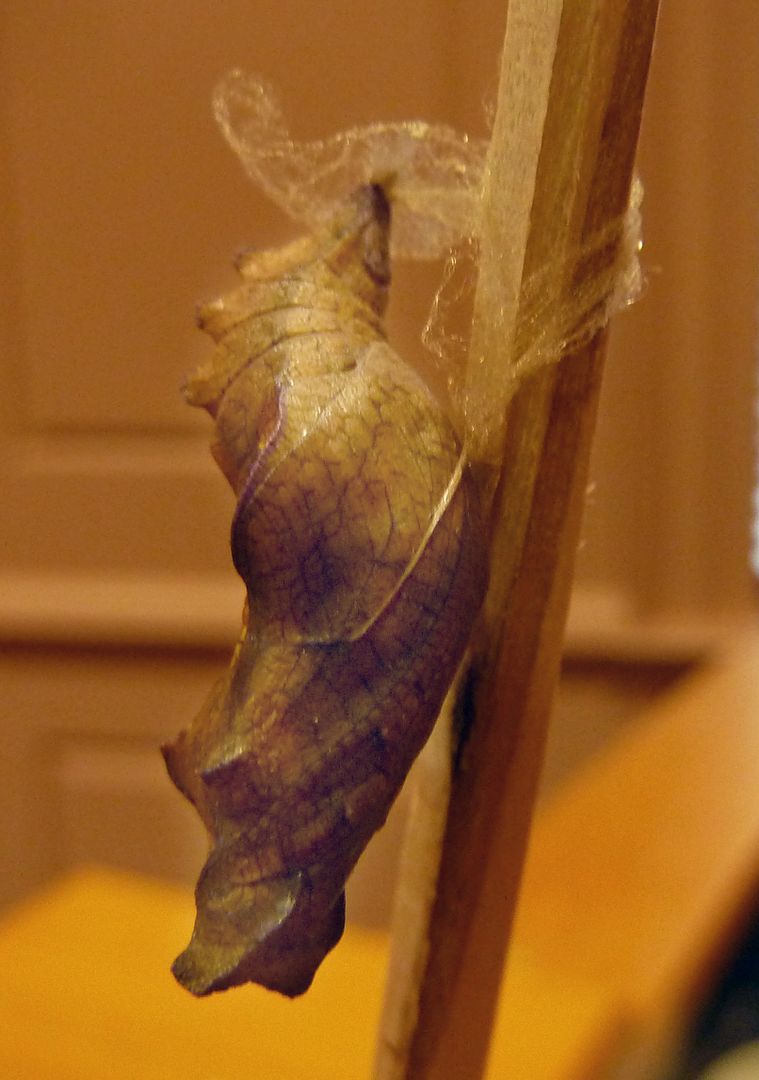 |
| A chrysalis to the Pipevine Swallowtail. |
I had another exciting class at the Mt. Cuba Center today. This time the class was on Butterflies in Your Garden, which focused on the most common and showiest Lepidoptera you can see flying in the daylight hours. The lecture was well constructed but had a few omissions like Hummingbird Moths, Mourning Cloak, and Skippers as a whole. They were brought up and talked about as we chanced upon them during the tour though so that's fine. It's hard planning around nature.
The tour started with a bang as we went to the Round Garden. It's a circular pavilion with a rather nice pool in the middle
From there we moved to a little spot next to their Trial Garden. It doesn't actually have a name but it's a nice garden bed. A massive Great Spangled Fritillary, Speyeria cybele, immediately caught my eye. And best of all it was very cooperative for my camera.
These are about the same size as the Monarch butterfly, if not slightly bigger. They use native violets as a host plant, however, females only lay eggs in the autumn and not necessarily anywhere near a violet. The poor caterpillars hatch and over winter with nothing to eat for 5 to 8 months. Barely any of them survive.
So to sustain a population of these it sounds like lots of violets spread around the garden are needed. I read in Caterpillars of Eastern North America: A Guide to Identification and Natural History (Princeton Field Guides)
The meadow garden had slightly less flying through but I've seen from past visits it can be swarming with butterflies, especially Monarchs. Here we see Virginia Ctenucha, Ctenucha virginica, which wasn't mentioned on the tour. I feel like it's trying to mimic some kind of roach but I've no idea why. This was just something I noticed.
Red-Spotted Purple, Limenitis arthemis. Here's one that was mentioned and I've seen them flying around my garden too. It's hard to tell from the photo but the upper corners of the wings have red spots on them, well more like orange blushing. This is a species that you'll find on rotting fruit, dung, and sipping at tree sap.
Also in their meadow garden was this caterpillar (sawfly larva?) which was on Joe Pye Weed but I've never known that genus to yield many caterpillars to anything interesting. At least nothing that feeds on it during the day.
Here is an inch worm of some sort. I had them identified at one point but I forgot what it's called. Basically they feed on composite flowers and take on the color of the bloom they're nibbling on, in this case Ironweed.
So that was my visit. :)
